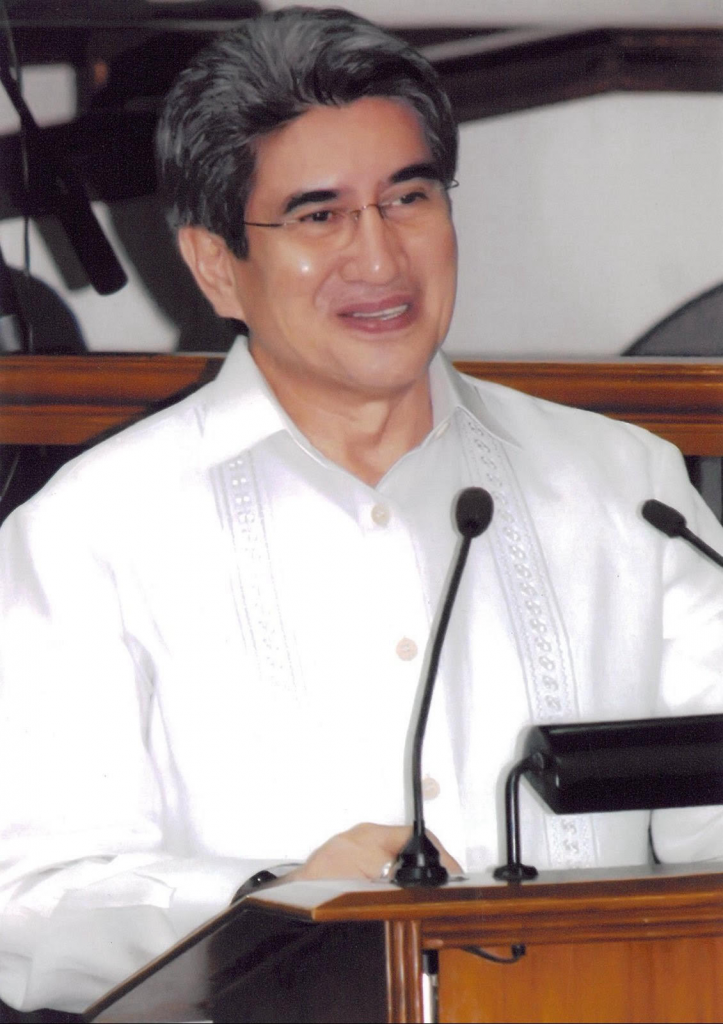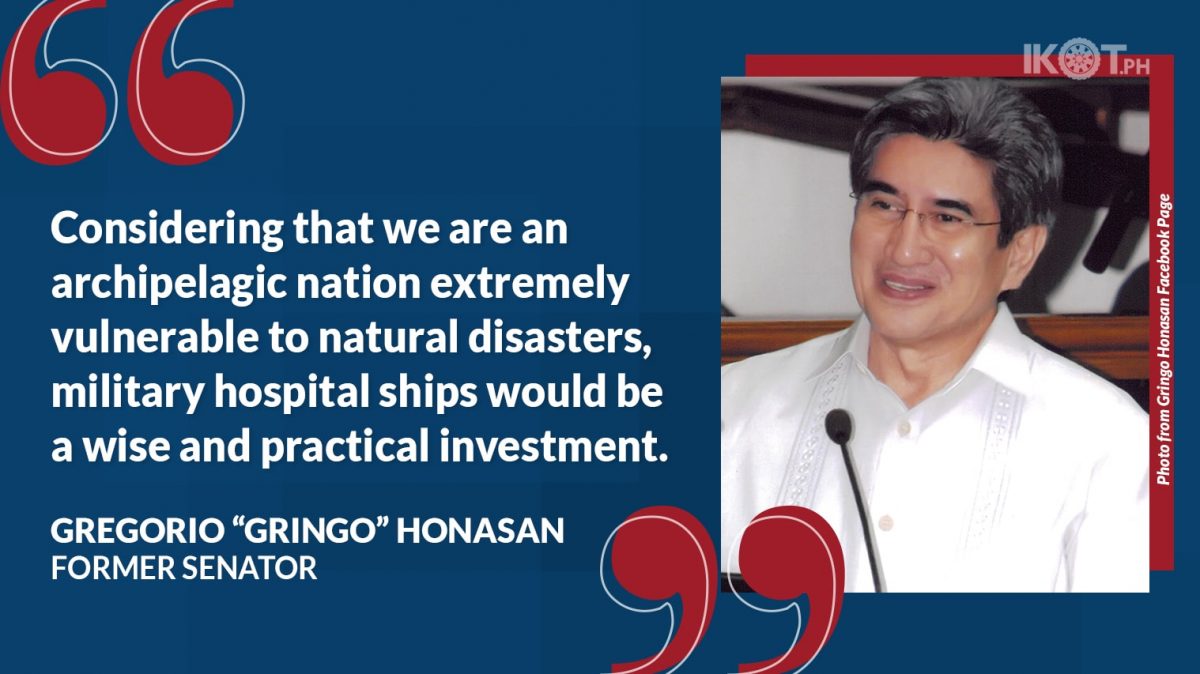The Armed Forces of the Philippines Modernization Program (AFPMP) should include the acquisition of military hospital ships that can be rapidly deployed not only in times of war, but also to support the government’s disaster relief and humanitarian operations during peacetime, former Senator Gregorio “Gringo” Honasan said on Sunday.
“Considering that we are an archipelagic nation extremely vulnerable to natural disasters, military hospital ships would be a wise and practical investment,” Honasan, one-time chairperson of the Senate committee on national defense, said in statement.
The revised AFPMP, enacted by Congress in 2012, aims to build up the capabilities of the navy, air force, and the army.
The hospital ships to be operated and maintained by the military can form part of the country’s overall disaster readiness, according to Honasan.
“The hospital ships should be capable of swift mobilization and coastal operations. They should be able to receive patients by air and water,” Honasan said.
“Right now, other countries are designing military hospital ships with 60 beds and 18 intensive care unit (ICU) beds, and with provisions for operating suites, a blood bank, and 100 medical personnel,” Honasan pointed out.
“Our initial suggestion is for three military hospital ships – one each to be based in Luzon, Visayas, and Mindanao – ready to provide life-saving mobile emergency medical services,” Honasan added.

The revised AFPMP, enacted by Congress in 2012, aims to build up the capabilities of the navy, air force, and the army.
In the last five years alone, Congress has earmarked a total of P121 billion to support the military’s modernization projects, including the procurement of new warships, fighter aircraft, helicopter gunships, early warning air surveillance radars, and batteries of shore-based, anti-ship supersonic cruise missiles.
The World Risk Index (WRI) has ranked the Philippines as the most disaster-prone country, followed by Indonesia and India.
The WRI ranks 193 countries in terms of potential exposure to natural disasters or severe weather events such as super typhoons, earthquakes, tsunamis, volcanic eruptions, and drought.
The Philippines has the highest disaster risk rating because it straddles the western Pacific Ocean’s typhoon belt – an area where almost one-third of the world’s most intense tropical cyclones form.
The country is also situated in the Pacific Ring of Fire where many earthquakes and volcanic eruptions happen.


